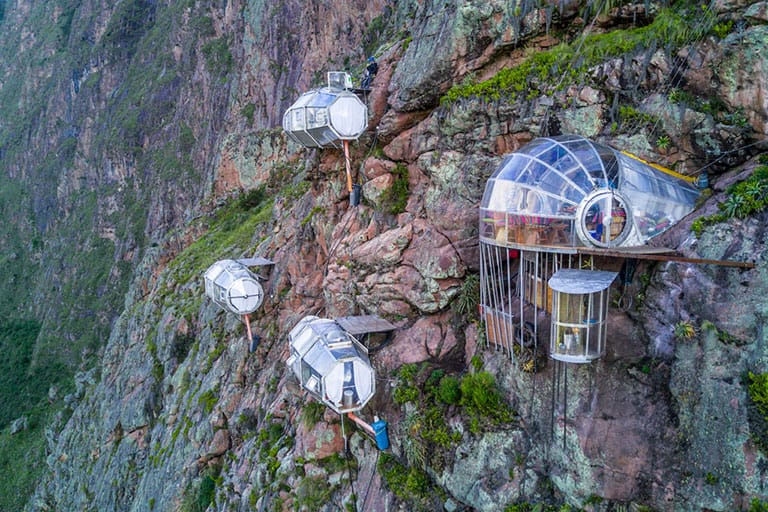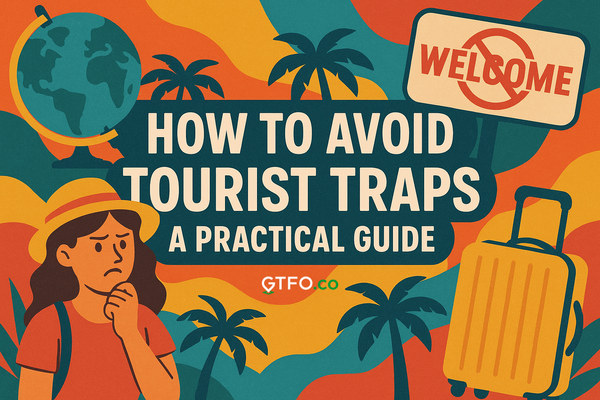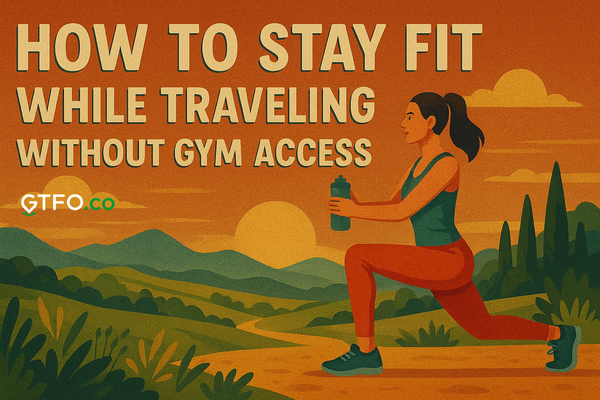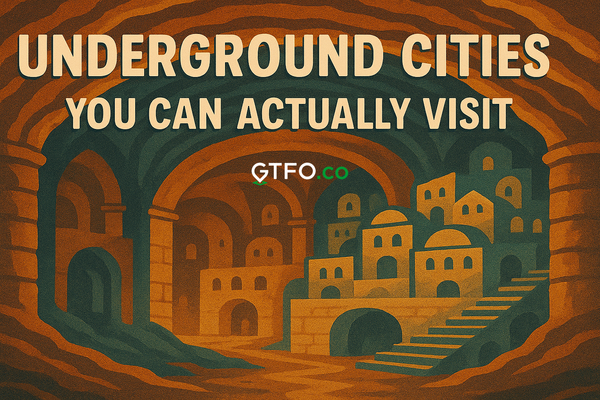Interesting Facts About Peru That’ll Make You Want to Book a Trip

Sure, you’ve heard of Machu Picchu, but there’s way more to Peru than Inca ruins. From Amazon rainforests to high-altitude cities to deserts that carve their own stories into the ground, Peru packs more variety into one country than most continents. Here are some of the most interesting facts about Peru you probably didn’t know, but should.
Key Takeaways
- Peru is home to one of the oldest civilizations in the Americas, and some of the world’s most iconic archaeological sites.
- It has deserts, jungles, beaches, and mountains - all in one country.
- Peru's biodiversity and cultural depth are unmatched in South America.
- From ancient engineering to modern street food, Peru delivers way beyond the tourist brochure.

1. Machu Picchu Isn’t the Oldest Site in Peru
Everyone talks about Machu Picchu (and yeah, it’s iconic), but it was built around 1450 AD. Peru has older ruins that are just as impressive.
Take Caral, for example. It’s over 5,000 years old and considered the oldest known city in the Americas, contemporary with the Egyptian pyramids. And it’s way less crowded.
Other ancient sites worth noting:
- Chan Chan: the largest adobe city in the world
- Sacsayhuamán: known for its impossibly tight stonework
- Kuelap: often called “the Machu Picchu of the North,” built by the Chachapoyas

2. It’s One of the Most Biodiverse Countries on the Planet
Peru ranks in the top five globally for biodiversity. It’s got:
- 90+ different microclimates
- Over 1,800 bird species
- Thousands of orchid and butterfly species
- Rainforests, cloud forests, deserts, high-altitude plains, and coastline—all in one place
In just a few hours, you can go from tropical jungle to alpine tundra. That kind of range is rare.

3. The Amazon River Starts in Peru
Most people associate the Amazon with Brazil, but the Amazon River actually begins in Peru, high in the Andes.
You can visit the source near Arequipa, or explore the Peruvian Amazon from Iquitos, a city so remote you can only get there by plane or boat—no roads lead in.

4. Peru Has a Desert Oasis Straight Out of a Movie
Huacachina is a real desert oasis surrounded by massive sand dunes. It looks photoshopped, but it’s legit.
You can:
- Sandboard down the dunes
- Ride dune buggies at full speed
- Watch sunsets over endless desert
It’s one of those surreal spots that makes you ask, how does this place even exist?

5. Lima Is a Global Food Capital
Peru isn’t just about landscapes, it’s a culinary powerhouse. Lima regularly ranks as one of the best food cities in the world, and it’s home to multiple restaurants in the global Top 50 list.
Must-try dishes:
- Ceviche: Peru’s national dish, made with raw fish, lime, chili, and onion
- Lomo saltado: stir-fried beef with a Chinese-Peruvian twist
- Aji de gallina: shredded chicken in a creamy, spicy sauce
- Anticuchos: skewered grilled beef heart sold on street corners
Wash it all down with pisco sour, Peru’s national cocktail.

6. The Nazca Lines Are Still a Mystery
In southern Peru, massive geometric figures, some hundreds of feet long, are etched into the desert floor. Known as the Nazca Lines, they’re only visible from the air and no one really knows why they were made.
Shapes include:
- A monkey
- A hummingbird
- A spider
- Perfectly straight lines that run for miles
Built over 1,500 years ago, they remain one of archaeology’s biggest unsolved puzzles.

7. Lake Titicaca Is the Highest Navigable Lake in the World
At 12,500 feet (3,810 meters) above sea level, Lake Titicaca is the highest lake in the world that’s large enough for boats.
It’s also home to the Uros people, who live on man-made floating islands crafted from reeds. You can visit the islands, learn how they’re built, and experience a way of life that’s remained unique for centuries.

8. Peru Has a Rainbow Mountain, But It's Not the Only One
Vinicunca, aka Rainbow Mountain, exploded on Instagram in recent years. But it’s not the only colorful mountain in Peru. There’s also Palccoyo, which has similar hues but fewer crowds and a much easier hike.
The colors come from mineral deposits, and they’re 100% natural. Just bring layers as it gets cold at altitude, even in summer.

9. Guinea Pig Is a Traditional Dish
Yep, in Peru, guinea pig (cuy) is a delicacy. It’s been eaten for thousands of years and is usually roasted whole, served with potatoes and spices.
It might freak out travelers who had one as a pet, but for locals, it’s just part of the cuisine. If you're adventurous with food, this is the place to try it.
10. Peruvians Invented One of the First Brain Surgeries
Archaeologists have found ancient skulls in Peru showing evidence of successful trepanation, a form of brain surgery where a hole was cut into the skull to relieve pressure or treat injury.
Some patients even survived, as shown by bone regrowth. That means Peruvians were doing brain surgery thousands of years ago, before metal tools or modern medicine.

11. It’s a Great Low-Budget Destination
Peru offers huge value for the money. Affordable lodging, cheap but amazing food, and low-cost transportation make it ideal for travelers looking to stretch their dollar.
You can hike, eat, and explore ancient ruins without emptying your savings.

12. There's a Cliffside Hotel You Can Only Access by Climbing
Want bragging rights? Check out Skylodge Adventure Suites in the Sacred Valley: glass pods bolted to a cliff, 1,200 feet above the ground.
To get there, you either:
- Climb a via ferrata (iron-rung ladder bolted into the rock)
- Or hike and zipline in
Either way, the views are unmatched, and it’s one of the most unique stays in the world.
Bottom Line
Peru isn’t just one of South America’s top destinations, it’s one of the most fascinating places on the planet. Ancient ruins, wild biodiversity, high-altitude lakes, deep Amazon jungle, surreal deserts, and some of the best food in the world… all in one country.
Whether you’re a hiker, a history nerd, a foodie, or someone who just wants to see something different, Peru brings the goods. Add it to your list. Or better yet, start planning now.
Common Questions
Q: When’s the best time to visit Peru?
Dry season (May to September) is ideal for hiking and highland travel. The Amazon is hot and humid year-round.
Q: Do I need to book Machu Picchu in advance?
Yes, especially if you want to hike the Inca Trail. Permits sell out months ahead.
Q: Is Peru safe for travelers?
Yes, for the most part. Stick to well-traveled areas, avoid sketchy neighborhoods at night, and keep an eye on your stuff.
Q: Do I need to know Spanish?
It helps, especially in non-touristy areas. But in major cities and tourist hubs, you’ll get by with basic phrases and some patience.
For more smart travel insights, offbeat destinations, and no-BS gear guides, check out the latest at GTFO.co.





